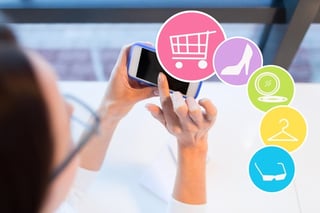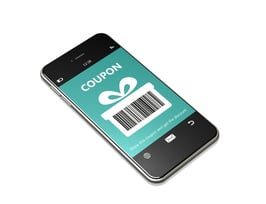Whether you’re working for a seasoned retail MVNO (or VNO – if you’re already offering some consumer services like home phone or broadband) or a retailer who hasn’t yet decided to launch its own MVNO offering, this blog will take you through some of the considerations you may not yet have thought about… and we won’t even mention mobile category revenue!
Historically, retailers have looked to mobile and adjunct offerings to significantly grow business revenue, this blog goes beyond that and looks at the reasons why a retailer should look beyond purely revenue.
1. MVNO Customers spend more in the retail store
Research conducted by a major European retailer recently discovered that their mobile subscriber-shoppers spent 20% more in their basket (online or offline) with the retailer, than prior to subscribing. Whether loyal customers are subscribing to the retail MVNO offering, or the positive digital experience fosters greater brand loyalty isn’t known.
Whatever the reason, a clear increase in basket size certainly helps justify a retailer’s MVNO segment.
2. Greater understanding of the consumer
Research from Nielsen tells us that 72% of smartphone users will use their smartphones to research an item before  purchasing it. Are you thinking what we’re thinking?
purchasing it. Are you thinking what we’re thinking?
It may seem a little ‘Big Brother-esque’ to use data insights to serve relevant offers to subscribers, but this only replicates what already happens in the digital world with popular social media sites using recent browsing history to serve up relevant offers for online retailers.
Providing offers that are relevant and timely ensures a greater chance of promotional marketing success. Imagine a shopper-subscriber searching on their mobile phone for “weather in Mallorca next week”, armed with this simple insight the retailer can now suggest relevant offers, foreign currency, travel insurance, sun tan lotion.
3. Reduce marketing costs
Retail magnate Sir Philip Green may once have said, “There are only three certain things in life, birth, death and the need for retailers to protect profit margins.” Okay, he probably never said that, but without doubt retailers are constantly under pressure to increase the ROI on marketing.
In research conducted by the Mobile Marketing Association with Walmart in 2014, mobile campaigns delivered twice the ROI of other traditional media used by retailers, with mobile performing in line with TV advertising at a fraction of the cost.
4. Better quality engagement
With the ubiquity of smartphones comes the opportunity for retail marketers to leverage the potential of new technologies. Near Field Communication or NFC could allow subscribers quick and easy access to in-store discounts with mobile vouchers.And what if you could deliver promotions and campaigns to subscribers if you knew they were near your store (or even your competitors). Adding location based content, the ability to deliver geographically aware materials, increased the performance of Walmart’s campaign results by 1.5 times in the Mobile Marketing Association study. Such a dramatic improvement on results shows that not only can retailers leverage mobile to reduce marketing costs, they can also use it to improve results.
5. Optimise the retail experience
As a retailer you invest countless hours of effort trying to ensure an optimal customer experience, with an increasingly real-time, 24/7, digital everything customer. And for your super digital savvy customers to become sticky and have a repeat customer experience you print paper discount vouchers… sorry? Paper coupons? *insert mic drop here* Entering the mobile market ensures that subscribers will regularly be interacting with your brand through your retail MVNO’s real-time self-care app, which allows subscribers to stay in control of their account and prevent bill shock. Not only is your app available in real-time and 24/7 (reinforcing your retail brand promise), digital service providers can also send push notifications regarding new sales promotions or marketing campaigns directly to customers’ mobile devices.
Entering the mobile market ensures that subscribers will regularly be interacting with your brand through your retail MVNO’s real-time self-care app, which allows subscribers to stay in control of their account and prevent bill shock. Not only is your app available in real-time and 24/7 (reinforcing your retail brand promise), digital service providers can also send push notifications regarding new sales promotions or marketing campaigns directly to customers’ mobile devices.
Research shows smartphone users are accessing their digital devices 200 times a day and our own data shows that subscribers access their account information on real-time mobile self-care apps on average 23 times a month. That’s 23 opportunities to interact with subscriber-shoppers every month.
6. Loyalty Rewards too expensive
Retail Analysts, Conlumino, report that “Loyalty cards, among other things, provide a great source of information and detail about consumer preferences and habits.” But with squeezed margins how do you create an attractive reward program that gets your customers shopping?The answer is to offer rewards with a significant perceived value, with low cost to the retailer and mobile data allowances fit that bill perfectly with 500mb being available at wholesale rates for less than €0.15.

